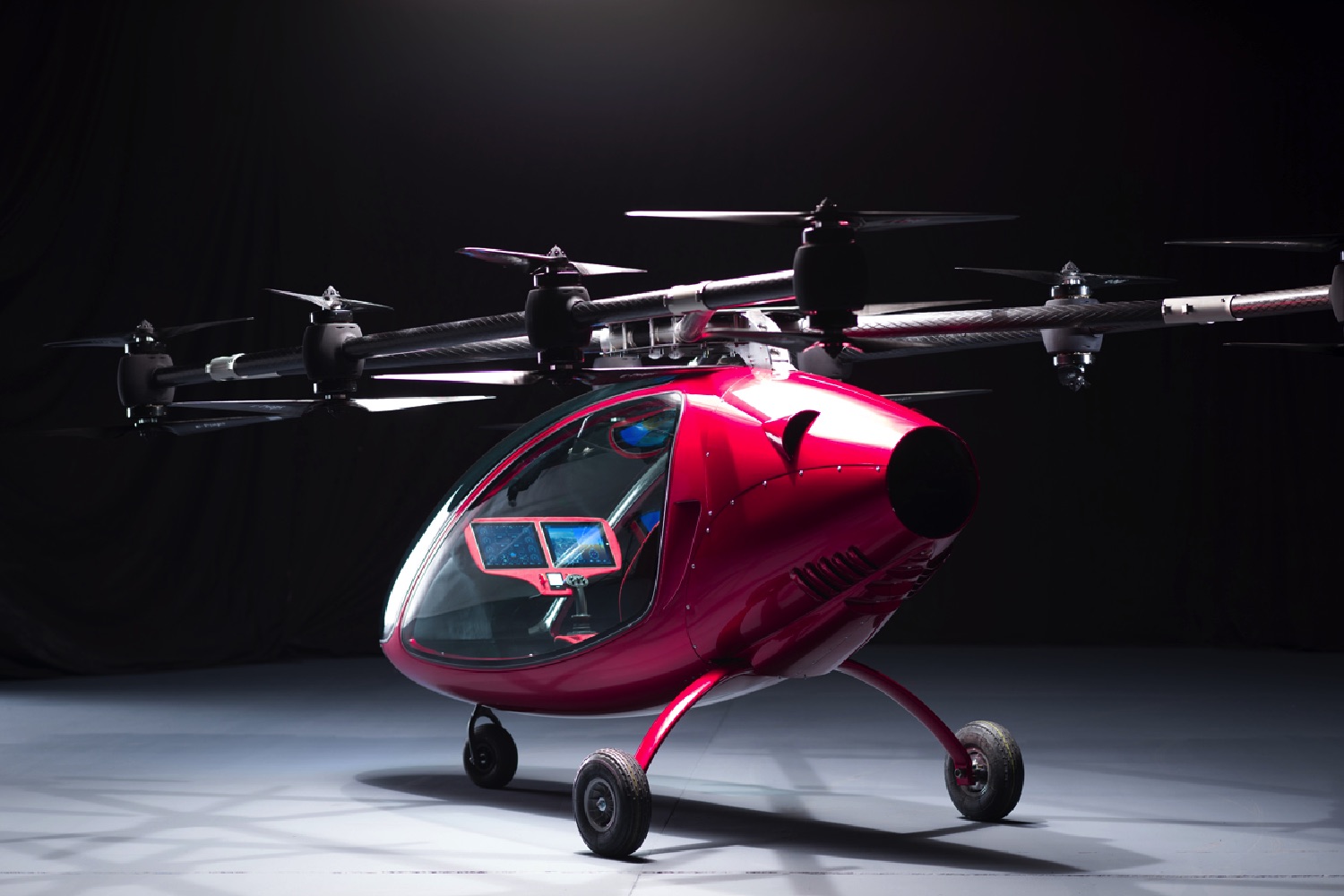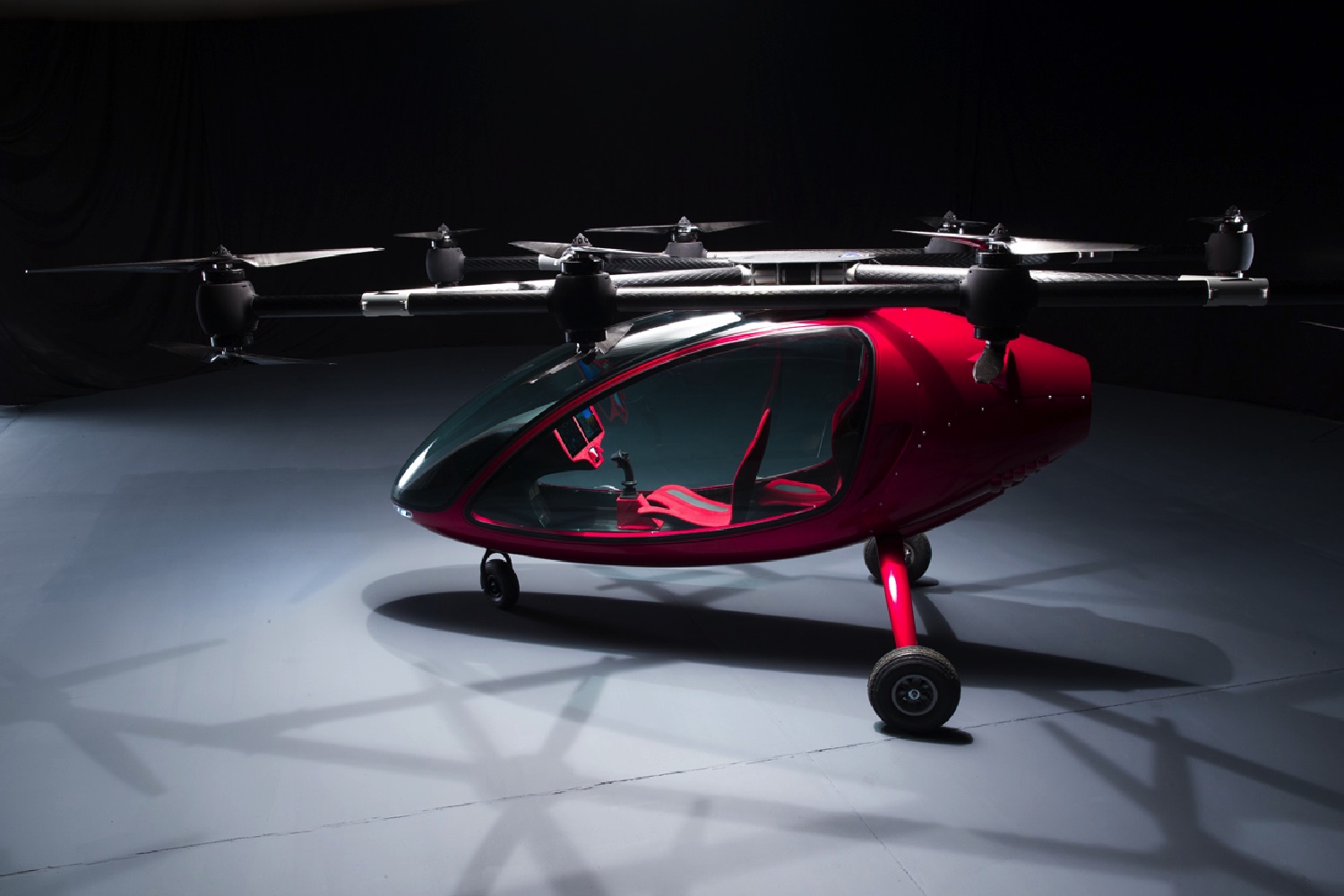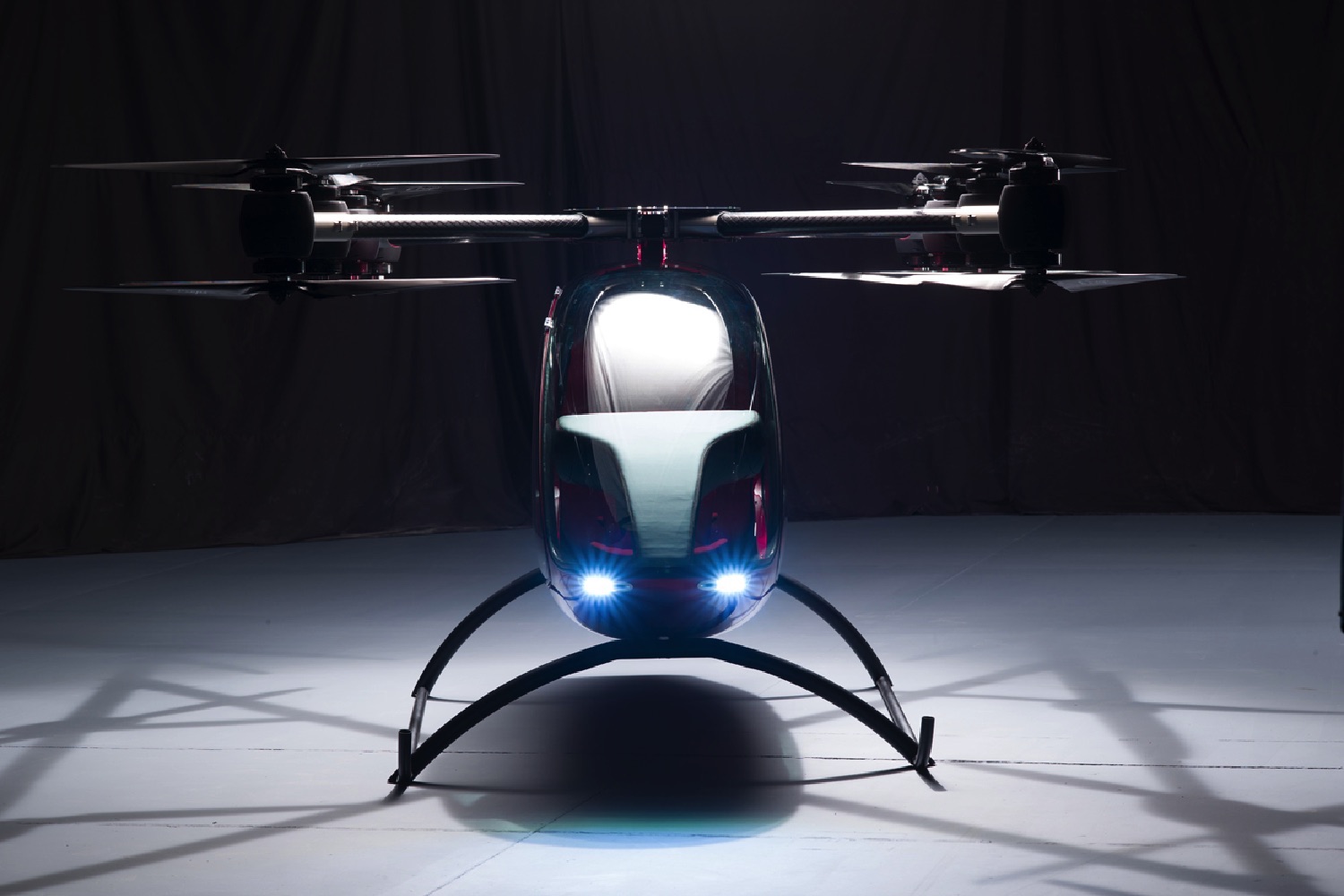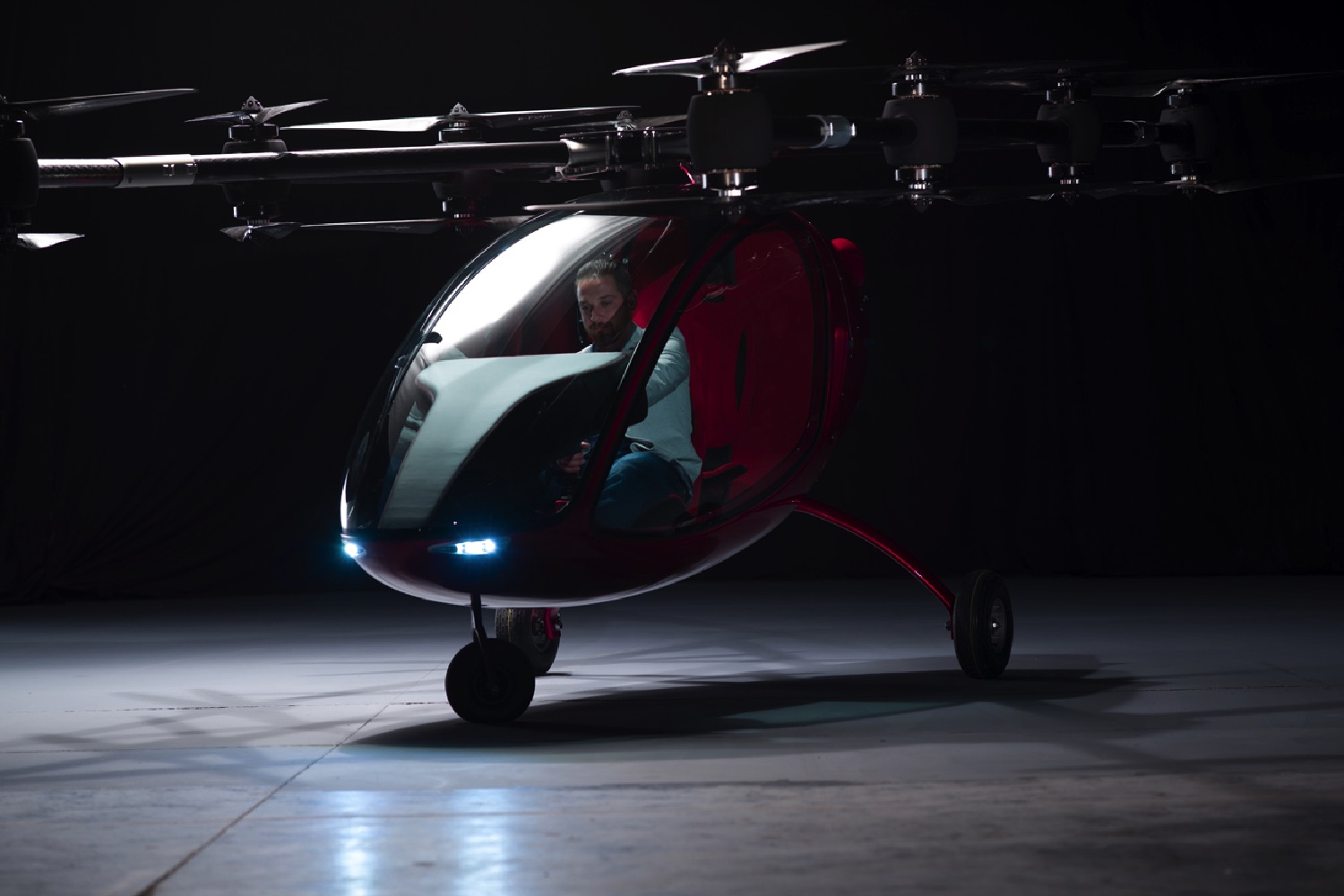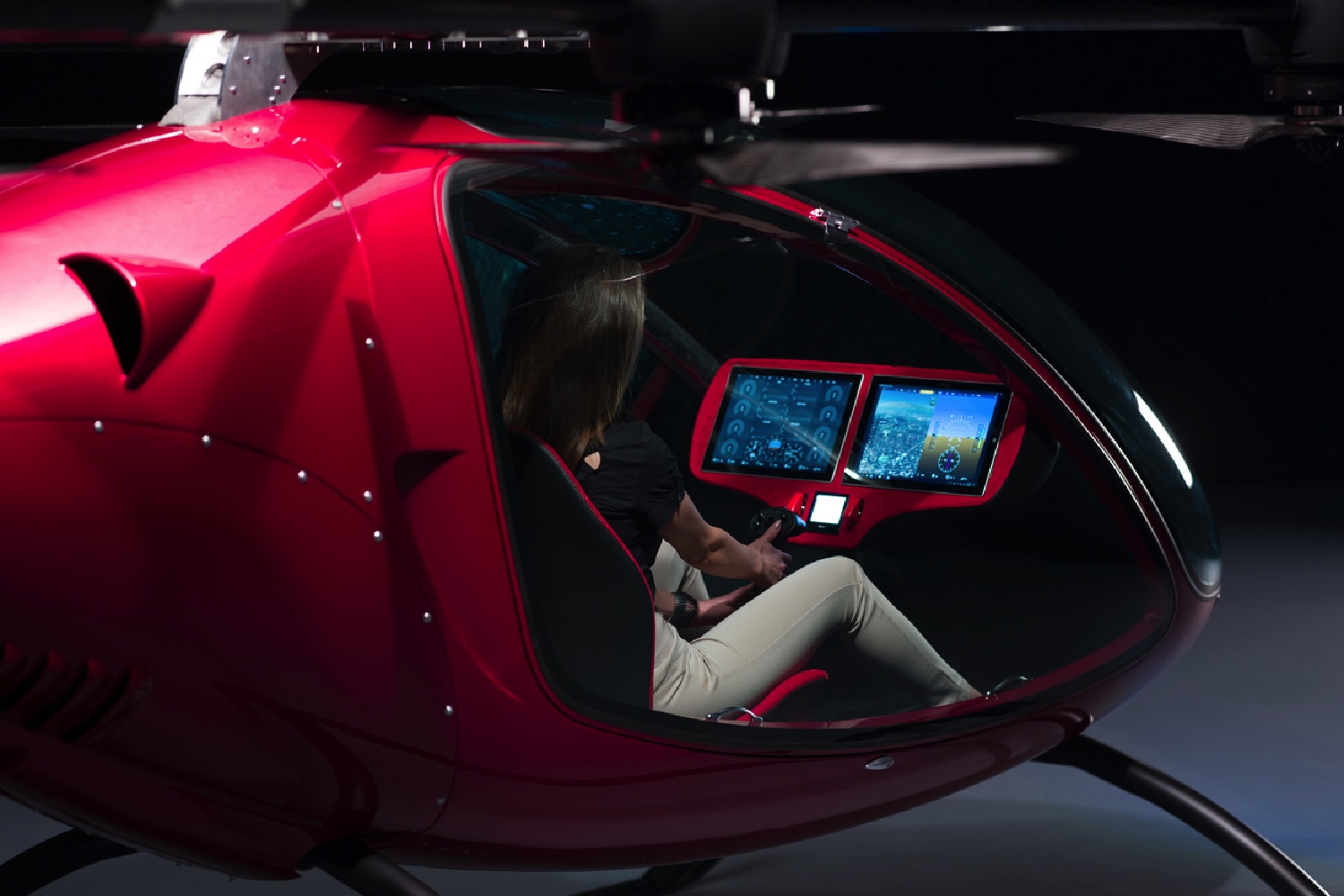“We have developed probably the most advanced passenger drone in the world as of today,” Peter Delco, a member of the Passenger Drone development team, told Digital Trends. “This sector is developing very fast. In the last two years while we were developing the drone there have been 2-3 similar projects launched. [However], based on size, safety, and performance we believe our drone outperforms others by far. We are the only company which has demonstrated manned flight so far — not just hovering, but actual flying.”
Passenger drone travel certainly promises a scintillating experience. The two-seater electric drone is propelled by 16 rotors, and produces no emissions. It is controlled by a touchscreen, and will take off with the press of just one button. Users can then draw their route on a map, and have the drone fly them there, using a range of smart autonomous technologies to do so without accidentally running into anything along the way.
Delco says that Passenger Drone will be perfect for private individuals who want to use it for either recreational purposes or personal travel, organizations that need to need to transport passengers quickly in congested areas, on-demand autonomous taxis, or automated cargo delivery of payloads up to 200 kilos.
The drone can reportedly travel for 30-35 minutes at speeds of 34-40 miles per hour — giving it a range of about 20 miles in total before recharging is required. “We have made 30 to 40 flights during the summer with different weights, and finally in early September we got the confidence to make the first manned flight, which lasted about 10 minutes,” Delco continued. “We probably traveled 2-3 miles without landing.”
There’s no word on exactly when this will be made available, or at what price point, although we expect Passenger Drone to have a presence at next year’s Consumer Electronics Show (CES) in Las Vegas. If we play our cards right, maybe we can get a test ride then? Heck, it might help us skip some of the queues!
Editors' Recommendations
- Wing and Walmart partner for Dallas drone delivery service
- Amazon shows off new delivery drone ahead of trial service
- DJI drone contest invites your best impossible shot
- Boeing-backed passenger drone contest offers weird and wonderful designs
- Feds ban Chinese-made drones over spying fears. Could your drone be next?
